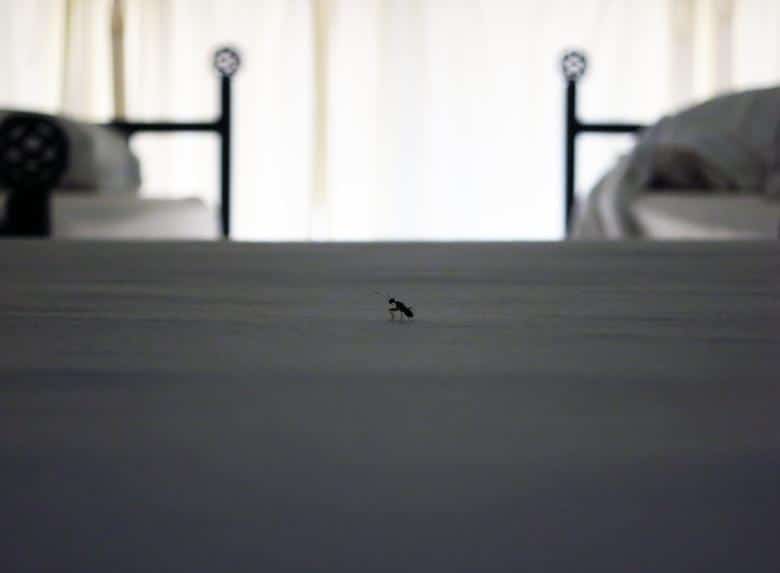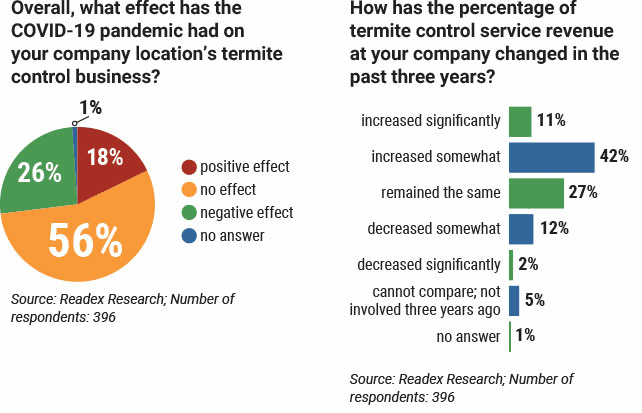-
This is Part One of a series on unpermitted housing in L.A.
-
Part Two will explore the dramatic decline in city housing inspections during the pandemic — and what that has meant for tenants struggling to keep a roof over their head.
-
Part Three will focus on a city program designed to bring illegal housing units up to code and give owners a path to legalization — and how it has fallen short of expectations.
At the outset of the COVID-19 pandemic, Los Angeles Mayor Eric Garcetti ordered residents to remain in their homes as much as possible. With a deadly new virus spreading, he said, “One thing is crystal clear in the fog of these days: We are all safer at home.”
But for those living in the city’s vast web of unpermitted housing, home often did not feel safe. Tenants in unpermitted rental units told us that during the pandemic they endured dangerous living conditions, eviction threats and an often slow response from city officials.
“The people that are experiencing some of the worst harassment and conduct by their landlord are the ones in illegal units,” said Trinidad Ocampo, an attorney with Neighborhood Legal Services of Los Angeles County.
Listen: Life In An Unpermitted LA Apartment Complex
She said recently, about one out of every five cases she’s seen has involved unpermitted housing. In some cases, tenants have had their water and power shut off.
“In one case, we had a landlord who removed the front door entirely to an illegal unit where a single mother lived with her children,” Ocampo said.
Illegal housing comes in many forms. Some units lacking permits for residential occupancy may exist inside buildings where other units are properly permitted. In other cases, unpermitted units can be found inside single-family home garages or backyard granny flats.
Kim Moore is pictured at the Mid-City property where she and other family members live.
(Al Kamalizad/LAist)
A dumpster lies upside-down in the courtyard.
(Al Kamalizad/LAist)
The hidden nature of illegal housing makes the scale of the problem difficult to capture. But our analysis of tens of thousands of city records found that last year, the city’s housing department dramatically scaled back inspections of unpermitted apartments.
We found that in 2020 — at a time when many renters were in crisis — citations related to unpermitted units fell by two-thirds compared with levels in 2019.
Housing rights advocates say during the pandemic, vulnerable and low-income tenants living in illegal units have often had little choice but to endure substandard conditions and landlord intimidation. For many, the only alternative is homelessness.
‘He Wanted Us Out. Like, Now.’
At first glance, the ramshackle one-story apartment complex on Washington Boulevard in L.A.’s Mid-City neighborhood looks deserted.
Windows are boarded up with plywood. A dumpster has been flipped over. The courtyard is strewn with the personal belongings of people who seem to have left in a hurry.
But on closer inspection, this property is still home for a number of families.
One of the remaining tenants, Kim Moore, speculated that for the owner, the dilapidated appearance is on purpose.
“He wants it to look abandoned out here,” she said.
Moore pointed to stray electrical wires dangling from the roof.
“Some of this wiring doesn’t even go to anything,” she said, wondering why the owner hasn’t fixed the problem.
“Come and get it out of here,” she said. “Come and take care of your building.”
Living here over the past year has been an ordeal, tenants said. And not just because of neglected repairs.
In late May of 2020, tenants received a letter with an ominous title: “THIRTY DAY NOTICE TO TERMINATE TENANCY.”
“He wanted us out,” Moore recalled. “Like, now.”

A stray wire hangs in the courtyard of a complex where tenants faced eviction threats during the pandemic.
More Eviction Threats, And No Offers Of Help
The letter said if tenants didn’t leave, the owner may seek to “recover court cost, attorney’s fees as permitted by law, and … additional statutory damages.” The letter (which you can see here) did not offer tenants help relocating on such short notice.
The eviction threat set off months of fear and confusion. Tenants received additional letters ordering them to leave, even though federal, state and local eviction moratoriums were in place.
Despite additional protections for those who couldn’t pay rent due to COVID-19, tenants received other letters aimed at collecting rent debt accrued during the pandemic.
Tenants said they asked why they were being kicked out of their homes at such a perilous time. They’d seen news stories claiming evictions were suspended during the pandemic. Moore said they didn’t get a straight answer.
“We’re saying, ‘But you can’t do this. We’re in the midst of a pandemic. Where are we going to go? I have my grandchildren. People have kids over here,’” Moore said. “He was literally just going to throw us out in the street. It was hard.”
Only later did tenants find out the city had cited their building for substandard conditions more than a year earlier — and that the owner was never supposed to be renting to them in the first place.
Toys are gathered in the courtyard for children who live in the complex.
(Al Kamalizad/LAist)
Plywood boards cover an exterior wall.
(Al Kamalizad/LAist)
The City Is Exploring ‘Possible Criminal Prosecution’
Some of the tenants are now pursuing a lawsuit against the LLC that owns the building, as well as LLC manager Ali Ketabchi. The suit alleges negligence and failure to maintain habitable conditions, among other things. Ketabchi hasn’t filed a response yet.
Ketabchi did not agree to an interview; he did send a short text message, saying, “We expect to provide context and defenses in the proceedings in due course.”
We sent Ketabchi a list of 17 questions about conditions at the complex. He did not respond to those questions.
In April 2019, the Los Angeles Department of Building and Safety cited the property as being “substandard due to hazardous electrical wiring.”

Mail arrives in a jumbled pile for tenants in different units.
Inspectors also noted that smoke alarms were missing or disabled, trash was piling up on the premises and unapproved locks had been installed.
The department’s citation, an order to comply, noted another violation: the occupancy of the building had changed. The units were being rented out, even though the property was not registered as a residential apartment building, according to inspectors.
Building and Safety department spokesman Jeff Napier told us the time allotted for the owner to correct the violations “has passed and the case is being accelerated for possible criminal prosecution.”
City records show the commercially zoned property was originally built in the 1940s as a motel. Records show it was later converted into a “board and care home” in the 1970s. But tenants say they never received any services or amenities that would qualify the building as a care facility.
Napier said a board and care facility requires “on site care for its occupants” and that they “usually share a common kitchen and other facilities.”
Today, tenants say their apartments still feel like motel rooms. Each unit has a small sleeping area attached to a compact bathroom. There are no kitchens.
Stay At Home, End Up In The Hospital
Miguel Roman said he found the units posted on an apartment listings website in 2017. He had recently moved out of his childhood home, and it was his first time looking for a place of his own.
The Washington Boulevard listing caught his eye because studios were going for $700 per month — a relative bargain in a city with sky-high rents. But Roman soon found the low rent would come with tradeoffs for his health.
Tenant Miguel Roman is pictured in his apartment.
(Al Kamalizad/LAist)
Roman holds a trap with spiders stuck to it.
(Al Kamalizad/LAist)
Like many hotel workers in L.A., Roman told us he was laid off from his hospitality job at the start of the pandemic. Losing his income was stressful. So was the possibility of catching COVID-19. So Roman followed the advice of public health officials and stayed home.
But staying home is what ended up putting him in the hospital.
“I had to go to the hospital because of these guys,” Roman said, crouching behind his bed to pick up a sticky trap full of spiders.
“One of them just bit me one night,” he said. “I didn’t notice it until a couple of days after. My whole leg started getting red.”
His leg got worse. It felt itchy and hot to the touch. Roman consulted a doctor, who he said kept him in the hospital for observation over two days.
He’s since recovered. But at the time, “I was extremely scared,” Roman said. “Not only are you worried about what’s going on with your leg, but you’re worried about COVID.”
Now, he regularly sets new traps and tries to seal cracks in the walls. But he said the bugs keep coming.
‘I Felt Like I Had No Other Option’
Another tenant, Kamisha Nafarrete, who lives at the complex with her boyfriend and young daughter, said insect bites have been a frequent problem.
“During the summertime, we get bit up really bad,” she said. On top of that, she said when temperatures rise, the power in her unit goes out constantly.
“God forbid somebody uses the microwave,” she said. “The whole thing shuts off … It made us wonder, is there something wrong with the power? Will this catch fire?”
Kamisha Nafarrete’s daughter plays with a dog in the courtyard.
(Al Kamalizad/LAist)
Nafarrete said she briefly lived in a hotel before moving into this building.
(Al Kamalizad/LAist)
Nafarrete is Kim Moore’s daughter. They live in separate units next to each other.
Nafarrete said before she found this building online, the family had fallen on hard times. She said she had been briefly living in a hotel, and her mother had been living in a van. Even though the apartment looked “horrible,” Nafarrete said she took it because it was relatively cheap.
“I felt like I had no other option,” she said.
Nafarrete’s brother lives there, too. During the pandemic, they’ve all held jobs at various times in a nearby nursing home. Nafarrete, a certified nursing assistant, said it was horrifying to see residents and two staffers die from COVID-19. The possibility of being kicked out of her home only added to that stress.
“I had nowhere to go,” Nafarrete said. “I think we would have been back in our cars.”
Cases That Come To Light Are Just ‘Scratching The Surface’
After Nafarrete contacted the city for help, officials with the Los Angeles Housing and Community Investment Department sent a letter to Ketabchi’s LLC ordering him to cancel the 30-day eviction notices.
The letter outlined local eviction rules, including the city’s eviction moratorium, and said “landlords may not demand or accept rent without first paying annual registration fees for their rental units and obtaining a valid rental unit registration certificate.”
The tenants have now stopped paying rent. They said after last December, the eviction and debt collection notices stopped coming.
Los Angeles Tenants Union organizer David Roud has been helping the tenants with their case. He said their story is all too common.
“There are illegal, unpermitted units all over the city, where people are being really seriously exploited,” Roud said. “Cases like this that we’re aware of are just truly scratching the surface.”
Los Angeles Tenants Union organizer David Roud has been meeting with tenants at this property.
(Al Kamalizad/LAist)
The Washington Boulevard property is in a state of disrepair.
(Al Kamalizad/LAist)
Tenants facing eviction in illegal units often fall through the cracks of city bureaucracy, he said. Many simply leave, worrying that having an eviction on their record could make it impossible to find a new place. Sometimes they don’t know who to turn to for help.
That confusion is understandable. L.A.’s housing department says it doesn’t inspect or cite many types of illegal housing. Meanwhile, the building and safety department says it focuses on physical building code violations, but doesn’t get involved in landlord-tenant disputes.
That can leave tenants like those at the Washington Boulevard property feeling stranded. Even though the city has known about substandard conditions and unapproved occupancy in their building for more than two years, tenants haven’t seen conditions improve — and they’re still waiting for relocation assistance.
“It can be the case that a landlord like this can just keep on sending these sorts of letters, can file meritless eviction actions, can continue to collect money on illegal units, because nobody’s stepped in to stop them,” said Makoa Kawabata, one of the attorneys representing the Washington Boulevard tenants who filed suit.
Taking landlords to court is an option. Tenants may even be able to recover all the rent they ever paid, attorneys say, since the property was being rented illegally from the start. But getting legal representation can be difficult for low-income tenants. Even when tenants do secure a lawyer, cases can drag on for years.
“As attorneys, we have the ability to file suit, we can sometimes get the court to step in and grant injunctions,” said Kawabata. “But we really are only a remedial measure to the sort of illegal behavior that’s going on out there.”
What questions do you have about business and the economy in Southern California?
David Wagner focuses on Southern Californians getting left behind in an economy beset by soaring unemployment, pandemic-related business closures and high housing costs.
Ask him here







/https://specials-images.forbesimg.com/imageserve/687636142/0x0.jpg)
